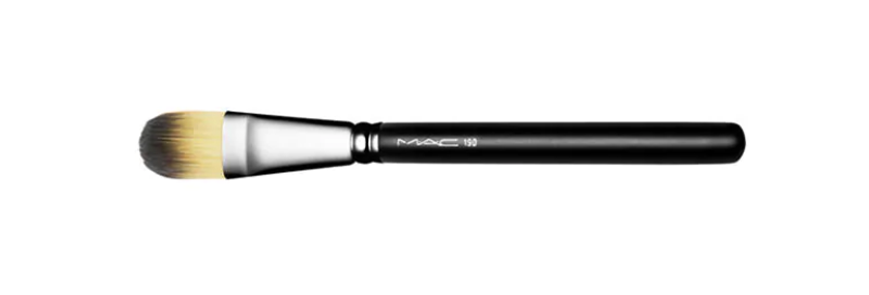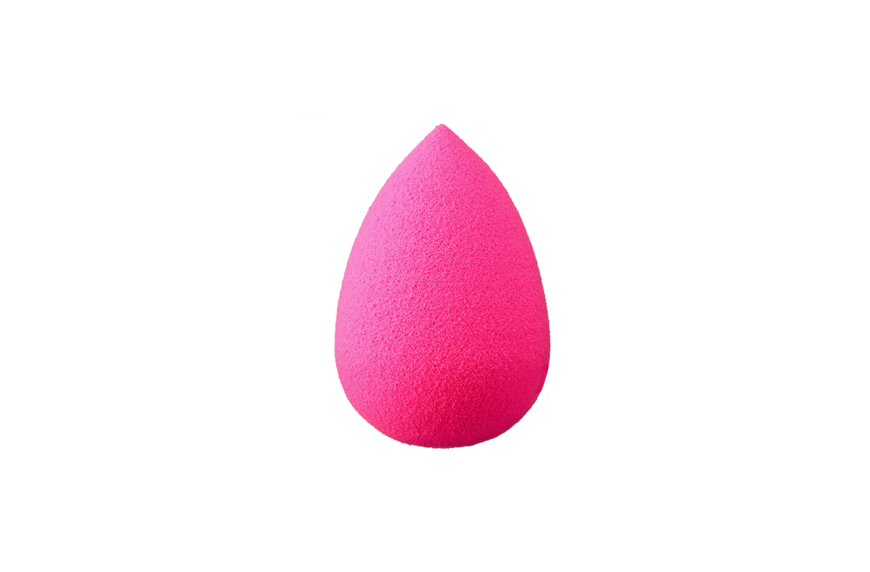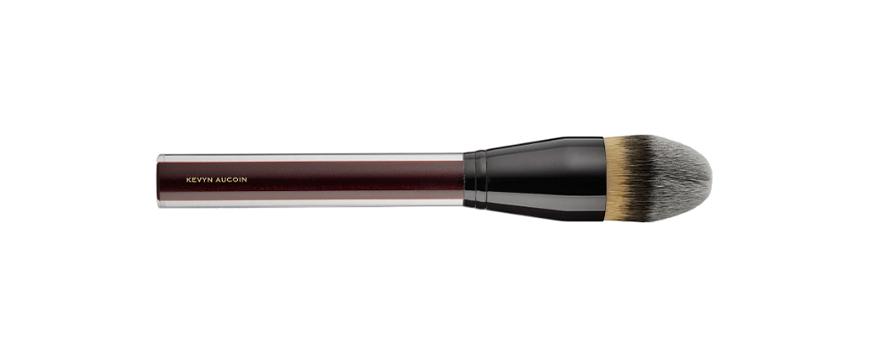The Best Foundation Application Tools to Use Depending on How Much Coverage You Want
"Different tools have different porosity which leads to varying results," says Vincent. "For example, a sponge absorbs more than a brush does."
The tool you use can help you manipulate the formula to get the type of coverage you want—to an extent. "The tool has a medium effect on the coverage level," says Vincent. A watery skin tint will never give you all full-on beat no matter what tool you use, but you can play with the products you have to make them closer to what you want depending on the day.
The best foundation application tools for each level of coverage
1. For lighter coverage
Both Vincent and Neil Scibelli, a makeup artist in New York City, say a makeup sponge like the Beautyblender ($20) is perfect for light coverage. "You can really diffuse the coverage, and create a sheer finish," says Scibelli. Vincent says to use a damp sponge, and that the sponge will help to absorb "to achieve a lighter coverage, use a damp Beautyblender or makeup sponge to apply foundation. The sponge will help to absorb a bit of the product.
2. For medium coverage
For medium coverage, Vincent likes to use her fingers. "This is how I apply my own foundation daily," she says. "The warmth from your body will help to melt the foundation into your skin for a seamless application." First she washes her hands. Then, she dispenses one pump of foundation onto her fingertips, and splits it between both hands (fingertips still, not palms). Next, she smoothes it on like a moisturizer. "The key is to gently smooth it on versus rubbing it in with too much force," she says. "If there are any streaky areas I just tap them with fingertips and good to go."
{{post.sponsorText}}
Scibelli is a fan of using synthetic foundation brushes for applying medium coverage. "Flat synthetic foundation brushes are great for distributing cream formulas on the skin and building up to heavier coverage," he says. "The rounder kabuki synthetic brushes are great for buffing out foundations for a sheerer look." If you're aiming to sheer out a thicker formula, "you should always pick up the product from a palate or the tops of your hand, so you know exactly how much you’re putting on to your skin—and how dense or sheer the product is," says Scibelli. Using a brush helps to pick up less product and then buff it into the skin.
The Kevyn Aucoin Foundation Brush ($82) is a staple in Scibelli's kit, but he also likes more affordable foundation application tools like the Revlon Foundation Brush ($9) and Sigma Beauty F80 Flat Kabuki Brush ($25).
3. For full coverage

Both Vincent and Scibelli recommend using both a foundation bush and a Beautyblender for full coverage looks. "I'd recommend starting with a foundation brush, and then layering and blending with a Beautyblender," says Scibelli. "The combo really helps to even the distribution of product to the skin without looking cakey." When finishing with the sponge, avoid pressing down too hard on the skin or using sweeping motions. "That can move the product around too much instead of layering it where you may need it."
For the brush, Vincent says to opt for a paddle foundation brush, like the MAC 190 Synthetic Foundation Brush ($35). "This style of brush will allow you to paint on the foundation for the fullest coverage," she says.
Here's how to choose between light, medium, and full-coverage foundations, and how to choose a good formula.
Loading More Posts...

